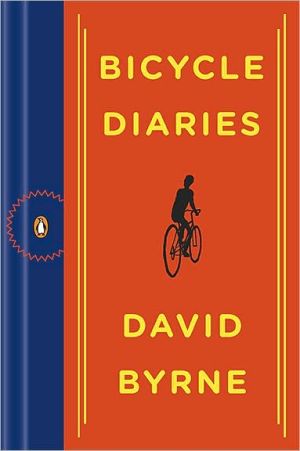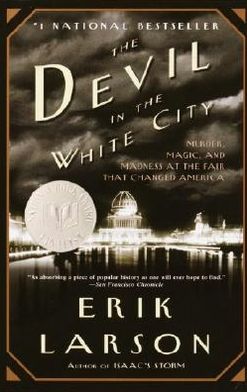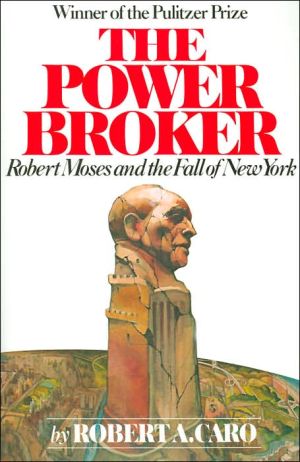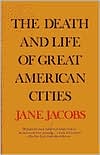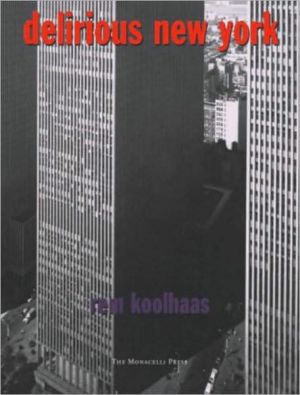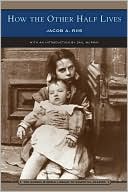Bicycle Diaries
A round-the-world bicycle tour with one of the most original artists of our day.\ Urban bicycling has become more popular than ever as recession- strapped, climate-conscious city dwellers reinvent basic transportation. In this wide-ranging memoir, artist/musician David Byrne-who has relied on a bike to get around New York City since the early 1980s-relates his adventures as he pedals through an engages with some of the world's major cities. From Buenos Aires to Berlin, he meets a range of...
Search in google:
A renowned musician and visual artist presents an idiosyncratic behind-thehandlebars view of the world's citiesSince the early 1980s, David Byrne has been riding a bike as his principal means of transportation in New York City. Two decades ago, he discovered folding bikes and started taking them on tour. Byrne's choice was made out of convenience rather than political motivation, but the more cities he saw from his bicycle, the more he became hooked on this mode of transport and the sense of liberation it provided. Convinced that urban biking opens one's eyes to the inner workings and rhythms of a city's geography and population, Byrne began keeping a journal of his observations and insights.An account of what he sees and whom he meets as he pedals through metropoles from Berlin to Buenos Aires, Istanbul to San Francisco, Manila to New York, Bicycle Diaries also records Byrne's thoughts on world music, urban planning, fashion, architecture, cultural dislocation, and much more, all conveyed with a highly personal mixture of humor, curiosity, and humility. Part travelogue, part journal, part photo album, Bicycle Diaries is an eye-opening celebration of seeing the world from the seat of a bike.The Barnes & Noble ReviewWhen David Byrne stops moving, does he fall over? And when stationary, is he liable to be found leaning carefully against a wall? Conversely, does his bicycle make unannounced domestic appearances -- by the fireside, perhaps, on a rainy day, or near the kitchen table when food is laid out? Fans of the great Flann O’Brien will know where I’m going with this: If Byrne, as recorded in Bicycle Diaries, has truly explored the world’s great cities en vélo, then according to the theory of “atomic interchange” propounded in O’Brien’s The Third Policeman he must by now be part bicycle, and his bicycle part Byrne.
I’ve been riding a bicycle as my principal means of transportation in New York since the early 1980s. I tentatively first gave it a try, and it felt good even here in New York. I felt energized and liberated. I had an old three-speed leftover from my childhood in the Baltimore suburbs, and for New York City that’s pretty much all you need. My life at that time was more or less restricted to downtown Manhattan—the East Village and SoHo—and it soon became apparent to me that biking was an easy way to run errands in the daytime or efficiently hit a few clubs, art openings, or nightspots in the evening without searching for a cab or the nearest subway. I know, one doesn’t usually think of nightclubbing and bike riding as being soul mates, but there is so much to see and hear in New York, and I discovered that zipping from one place to another by bike was amazingly fast and efficient. So I stuck with it, despite the aura of uncoolness and the danger, as there weren’t many people riding in the city back then. Car drivers at that time weren’t expecting to share the road with cyclists, so they would cut you off or squeeze you into parked cars even more than they do now. As I got a little older I also may have felt that cycling was a convenient way of getting some exercise, but at first I wasn’t thinking of that. It just felt good to cruise down the dirty potholed streets. It was exhilarating.\ By the late ’80s I’d discovered folding bikes, and as my work and curiosity took me to various parts of the world, I usually took one along. That same sense of liberation I experienced in New York recurred as I pedaled around many of the world’s principal cities. I felt more connected to the life on the streets than I would have inside a car or in some form of public transport: I could stop whenever I wanted to; it was often (very often) faster than a car or taxi for getting from point A to point B; and I didn’t have to follow any set route. The same exhilaration, as the air and street life whizzed by, happened again in each town. It was, for me, addictive.\ This point of view—faster than a walk, slower than a train, often slightly higher than a person—became my panoramic window on much of the world over the last thirty years—and it still is. It’s a big window and it looks out on a mainly urban landscape. (I’m not a racer or sports cyclist.) Through this window I catch glimpses of the mind of my fellow man, as expressed in the cities he lives in. Cities, it occurred to me, are physical manifestations of our deepest beliefs and our often unconscious thoughts, not so much as individuals, but as the social animals we are. A cognitive scientist need only look at what we have made—the hives we have created—to know what we think and what we believe to be important, as well as how we structure those thoughts and beliefs. It’s all there, in plain view, right out in the open; you don’t need CAT scans and cultural anthropologists to show you what’s going on inside the human mind; its inner workings are manifested in three dimensions, all around us. Our values and hopes are sometimes awfully embarrassingly easy to read. They’re right there—in the storefronts, museums, temples, shops, and office buildings and in how these structures interrelate, or sometimes don’t. They say, in their unique visual language, “This is what we think matters, this is how we live and how we play.” Riding a bike through all this is like navigating the collective neural pathways of some vast global mind. It really is a trip inside the collective psyche of a compacted group of people. A Fantastic Voyage, but without the cheesy special effects. One can sense the collective brain—happy, cruel, deceitful, and generous—at work and at play. Endless variations on familiar themes repeat and recur: triumphant or melancholic, hopeful or resigned, the permutations keep unfolding and multiplying.\ Yes, in most of these cities I was usually just passing through. And one might say that what I could see would therefore by definition be shallow, limited, and particular. That’s true, and many of the things I’ve written about cities might be viewed as a kind of self-examination, with the city functioning as a mirror. But I also believe that a visitor staying briefly can read the details, the specifics made visible, and then the larger picture and the city’s hidden agendas emerge almost by themselves. Economics is revealed in shop fronts and history in door frames. Oddly, as the microscope moves in for a closer look, the perspective widens at the same time.\ Each chapter in this book focuses on a particular city, though there are many more I could have included. Not surprisingly, different cites have their own unique faces and ways of expressing what they feel is important. Sometimes one’s questions and trains of thought almost seem predetermined by each urban landscape. So, for example, some chapters ended up focusing more on history in the urban landscape while others look at music or art—each depending on the particular city.\ Naturally, some cities are more accommodating to a cyclist than others. Not just geographically or because of the climate, though that makes a difference, but because of the kinds of behavior that are encouraged and the way some cities are organized, or not organized. Surprisingly, the least accommodating are sometimes the most interesting. Rome, for example, is amazing on a bike. The car traffic in central Italian cities is notoriously snarled, so one can make good time on a bike, and, if the famous hills in that town are avoided, one can glide from one amazing vista to the next. It’s not a bike-friendly city by any means—the every-man-for-himself vibe hasn’t encouraged the creation of secure bike lanes in these big towns—but if one accepts that reality, at least temporarily, and is careful, the experience is something to be recommended.\ These diaries go back at least a dozen years. Many were written during work-related visits to various towns—for a performance or an exhibit, in my case. Lots of folks have jobs that take them all over the world. I found that biking around for just a few hours a day—or even just to and from work—helps keep me sane. People can lose their bearings when they travel, unmoored from their familiar physical surroundings, and that somehow loosens some psychic connections as well. Sometimes that's a good thing—it can open the mind, offer new insights— but frequently it's also traumatic in a not-so-good way. Some people retreat into themselves or their hotel rooms if a place is unfamiliar, or lash out in an attempt to gain some control. I myself find that the physical sensation of self-powered transport coupled with the feeling of self-control endemic to this two-wheeled situation is nicely empowering and reassuring, even if temporary, and it is enough to center me for the rest of the day.\ It sounds like some form of meditation, and in a way it is. Performing a familiar task, like driving a car or riding a bicycle, puts one into a zone that is not too deep or involving. The activity is repetitive, mechanical, and it distracts and occupies the conscious mind, or at least part of it, in a way that is just engaging enough but not too much—it doesn't cause you to be caught off guard. It facilitates a state of mind that allows some but not too much of the unconscious to bubble up. As someone who believes that much of the source of his work and creativity is to be gleaned from those bubbles, it's a reliable place to find that connection. In the same way that perplexing problems sometimes get resolved in one's sleep, when the conscious mind is distracted the unconscious works things out.\ During the time these diaries were written I have seen some cities, like New York, become more bike-friendly in radical new ways, while in others the changes have been slow and incremental—they have yet to reach a tipping point as far as accepting cycling as a practical and valid means of transportation. Some cities have managed to find a way to make themselves more livable, and have even reaped some financial rewards as a result, while others have sunk deeper into the pits they started digging for themselves decades ago. I discuss these developments, urban planning, and policy in the New York City chapter, as well as describe my limited involvement in local politics (and entertainment) as it pertains to making my city more bike-friendly, and, I think, a more human place to live.
\ From Barnes & NobleIf you encounter David Byrne in New York or, for that matter, in Paris, Istanbul, or Buenos Aires, chances are the co-founder of the Talking Heads will be pedaling on a bike. Ever since the early eighties, this versatile musician, visual artist and filmmaker has been getting from Point A to Point B on his convenient, lightweight, and, as it turns out, ecologically-friendly bike. In Bicycle Diaries, which features cycling jaunts around Berlin, Manila, San Francisco, and all the aforementioned cities, Byrne proves that his rides haven't been just mindless exercises. In fact, they provide the stimulus for observations on a plethora of subjects, including cultural differences, urban planning, music, visual arts, globalization, and even the collapse of civilizations. Fast-paced road trips; now in paperback.\ \ \ \ \ \ Krista Walton…despite the title, this is no travel diary. Byrne's reflections are as varied as the countries he visits: He muses on everything from urban planning to bike helmets to art criticism to Latin music, often on his bike (but not always). Even if you don't own a bike and have no plans to mount one, you'll pedal through the pages of Bicycle Diaries in no time; the book is full of musings by a compelling eccentric.\ —The Washington Post\ \ \ Geoff NicholsonInevitably the diary format gives the book a random, scattershot quality: Byrne is in no sense a "programmatic" bike rider, and he admits he's sometimes just skimming over the surface of the cultures he encounters. Even so, his interests and activities—cutting-edge art exhibitions, rock festivals, a subversive PowerPoint presentation about PowerPoint presentations, a belly dance party—and certainly his personality are singular enough to give the book consistency and coherence…The book, then, is partly about cycling but also about whatever Byrne happens to have on his mind at the time, and fortunately a lot of it is quite interesting.\ —The New York Times\ \ \ \ \ Publishers WeeklyByrne is fascinated by cities, especially as visited on a trusty fold-up bicycle, and in these random musings over many years while cycling through such places as Sydney, Australia; Manila, Philippines; San Francisco; or his home of New York, the former Talking Head, artist and author (True Stories) offers his frank views on urban planning, art and postmodern civilization in general. For each city, he focuses on its germane issues, such as the still troublingly clear-cut class system in London, notions of justice and human migration that spring to mind while visiting the Stasi Museum in Berlin, religious iconography in Istanbul, gentrification in Buenos Aires and Imelda Marcos's legacy in Manila. In low-key prose, he describes his meetings with other artists and musicians where he played and set up installations, such as an ironic PowerPoint presentation to an IT audience in Berkeley, Calif. He notes that the condition of the roads reveals much about a city, like the impossibly civilized, pleasant pathways designed just for bikes in Berlin versus the fractured car-mad system of highways in some American cities, giving way to an eerie “post apocalyptic landscape” (e.g., Detroit). While “stupid planning decisions” have destroyed much that is good about cities, he is confident there is hope, in terms of mixed-use, diverse neighborhoods; riding a bike can aid in the survival of cities by easing congestion. Candid and self-deprecating, Byrne offers a work that is as engaging as it is cerebral and informative. (Sept.)\ \ \ \ \ Library JournalWhen he's in a city, Byrne's preferred form of transportation for 20-some years has been the bicycle. Here is a grab bag of his observations—always interesting, frequently original—caught on the fly as the much-traveled Byrne crisscrosses the globe, from London and New York to Manila and Buenos Aires. In London, Byrne, known of course as the cofounder and lead singer of Talking Heads, attends an exhibit by an award-winning cross-dressing potter, who shows up at the exhibit with loving wife and daughter. In Manila, he is invited to sing along at karaoke with the Heads' hit, "Burning Down the House," but declines. The clean, safe streets in Berlin impress him, but he is disturbed by the lack of concern for bikers and pedestrians in his own country. Preoccupations recur: how do genes and myths shape our behavior and attitudes? Is creativity just a sophisticated form of lying? Why do souks and shopping malls look the same everywhere (is there "some kind of meme for social shopping?")? VERDICT The man who emerges from these pages is the type of person we'd all like to meet, just more observant than most. Enthusiastically recommended for all readers of travel memoir or of just plain good writing.—David Keymer, Modesto, CA\ \ \ \ \ Kirkus ReviewsRenowned pop artist shares snippets from his travels and thoughts. In recent years, Byrne (Arboretum, 2006, etc.) best known as the founder of the Talking Heads, has branched out into modern art, video and sound installation and writing, among other pursuits. Here he offers a compendium of brief travelogues colored by the unique perspective of an urban cyclist. From Manila and Sydney to Berlin and San Francisco, Byrne played shows, met with galleries and musicians and ate and drank in fine and humble restaurants, all the while finding ways to get from A to B using his folding bicycle. Not surprisingly, his preferred means of transportation worked beautifully in some cities and proved challenging in others, though he relished the edgy charms of even the grittiest routes. Byrne fans will enjoy this peek into the star's daily life, which seemed calm, ruminant and pleasantly simple, yet shot through with the privileges that his fame and reputation afford-specifically, the opportunity to travel regularly and well. The narrative drifts from subject to subject-architecture, urban planning, modern art, music, politics, food, philosophy-never lingering on any one for more than a paragraph or two. One of the few recurring themes is Byrne's notion that cities can be viewed as three-dimensional projections of people's hopes, dreams and fears, and that this tangible collective spirit shapes the lives of residents in a self-perpetuating interplay. Whether describing what he made for lunch during a blackout or puzzling over the thorniest problems of civilization, the author is undeniably an intelligent, sensitive citizen of the world. It's evident that he has thought deeply about many of the topics hepresents, but his well-intentioned reflections on complex issues could benefit from a gifted editor and a more sustained analysis. As the book progresses, Byrne emphasizes the diary aspect more than the bicycle, which appears occasionally in the midst of his desultory ramblings before reemerging as the main subject of the final chapter. Disjointed but diverting.\ \ \ \ \ The Barnes & Noble ReviewWhen David Byrne stops moving, does he fall over? And when stationary, is he liable to be found leaning carefully against a wall? Conversely, does his bicycle make unannounced domestic appearances -- by the fireside, perhaps, on a rainy day, or near the kitchen table when food is laid out? Fans of the great Flann O’Brien will know where I’m going with this: If Byrne, as recorded in Bicycle Diaries, has truly explored the world’s great cities en vélo, then according to the theory of “atomic interchange” propounded in O’Brien’s The Third Policeman he must by now be part bicycle, and his bicycle part Byrne.\ Let us examine the case. Bicycle Diaries takes the form of a light travelogue or pedalodyssey, with Byrne -- ex-frontman of Talking Heads, current artistic all-rounder -- gliding on his fold-up two-wheeler through Istanbul or Berlin or Sydney, popping into galleries, playing music, talking to interesting people, thinking thoughts, reading books, and then recording his impressions as to the essential nature of the place and its degree of bicycleability (these last two quantities being not unrelated.) So with The Third Policeman in mind, we must ask: After all this international pedaling about, and so much hard atomic contact between rider and seat, exactly what percentage of David Byrne is still David Byrne? His prose style, certainly, would seem to suggest a preponderance of bicycle-atoms. “Most often when listening and not dancing,” he writes in the “London” chapter of Bicycle Diaries, “I choose music with singing as I find that the arc of a melody, combined with harmonies and a rhythmic pulse, can be incredibly emotionally involving. We call these songs.” Yes, I suppose we do. Elsewhere Byrne tellingly refers to humans as “poor little meat puppets” and offers the speculation that “while religions might indeed be a lot of superstition as well as being an unfortunate excuse for violence and countless horrors they might also serve a purpose.” Pure bicycle-speak.\ But this is disrespectful, isn’t it. Byrne is a musical visionary, a great lyricist too, and as far as I’m concerned he can write whatever the hell kind of book he wants to write. Besides, the functional and mildly alienated tone of his prose actually works rather well in this context: his is a bicycling mind, with a point of view -- as he explains in the Introduction -- “faster than a walk, slower than a train, often slightly higher than a person.” And if, in this light swoon of two wheels whirring, some of the things that occur to him are a little banal, well, others are quite interesting. In Buenos Aires, for example, pondering the strange absence of bicycles from a city so temperate, flat, and cleanly laid out, he concludes that the answer is simply “cultural abhorrence”: “The cycling meme hasn’t been dropped into the mix here, or it never took hold,” he muses, before pedalling off into an excursus on the theories of Jared Diamond.\ Also: The world is fascinating. Byrne in Bicycle Diaries is the complete postmodern tourist, open to everything, concepts at his fingertips, keenly -- but not too keenly -- interested in a certain hovering, numinous sensation that he gets around shrines and places of worship, and so he makes a very good guide. In the recession-bitten town of Millvale, Pennsylvania, just outside Pittsburgh, he finds a Croatian church containing tempera wall paintings by the midcentury artist Maxo Vanka. The imagery is explosive: factories belch infernal smoke; angels weep as a top-hatted industrialist peruses the stock quotes; the Virgin, her face a stark grimace of compassion, separates two struggling soldiers, while Jesus takes a bayonet to the side. Smutty with Allegheny Valley coal dust, the murals knock Byrne out: he dubs Vanka “the Diego Rivera of Pittsburgh.”\ Byrne also spends some time in Manila, where in contrast to Vanka’s devotion he finds the relics of secular idolatry -- gauzy, soft-core homages to Ferdinand and Imelda Marcos, painted dreamscapes designed to propel the blighted First Couple into the realm of national mythology. Not that we ourselves are immune to such things, Byrne is quick to note: “The desire to find a slot for oneself in the collective national psyche runs deep. George Bush and Ronald Reagan were often photographed wearing Western clothes despite one being a New England WASP and the other a Hollywood movie star.”\ So much for neutral observer Byrne: there’s also plugged-in Byrne, international art scene Byrne, whose connections in each city tend to be deep in that city’s culture sector. (“My friend C and I have lunch with two youngish guys who run an art gallery here...”) And then, of course, there’s bicycling Byrne, threading his way with spindly, helmeted heroism past every bus-shaped Scylla and whirling Charybdis-like junction that the modern city can throw at him. Biking à la Byrne means ecology, geekiness, a way of piercing into the world: skateboarding for the cerebral, if you like. The bicycle, fundamentally, is a machine in two dimensions -- which is why we appreciate so heartily the sight of a fat man on a bicycle. Byrne is not fat: he is tall and pointy and possessed of a certain angelic remoteness. But he loves to ride, and look at things, and he thinks, moreover, that the hour of the bicycle may be upon us. He applauds the bike racks sensibly installed on San Francisco’s Muni buses; “New Yorkers,” he ventures, “are at the point where they might, given the chance and opportunity, consider a bicycle as a valid means of transportation.” He is very interested in a new prototype helmet that can be slipped inside various “skins”: “a warm woolen skin with earflaps for cold winters, a porous mesh skin for hot summer.” He feels the cold, and he feels the heat, and he thinks about his fellow beings. More man than bicycle after all. --James Parker\ James Parker is the author of Turned On: A Biography of Henry Rollins (Cooper Square Press), and a correspondent for The Atlantic.\ \ \
